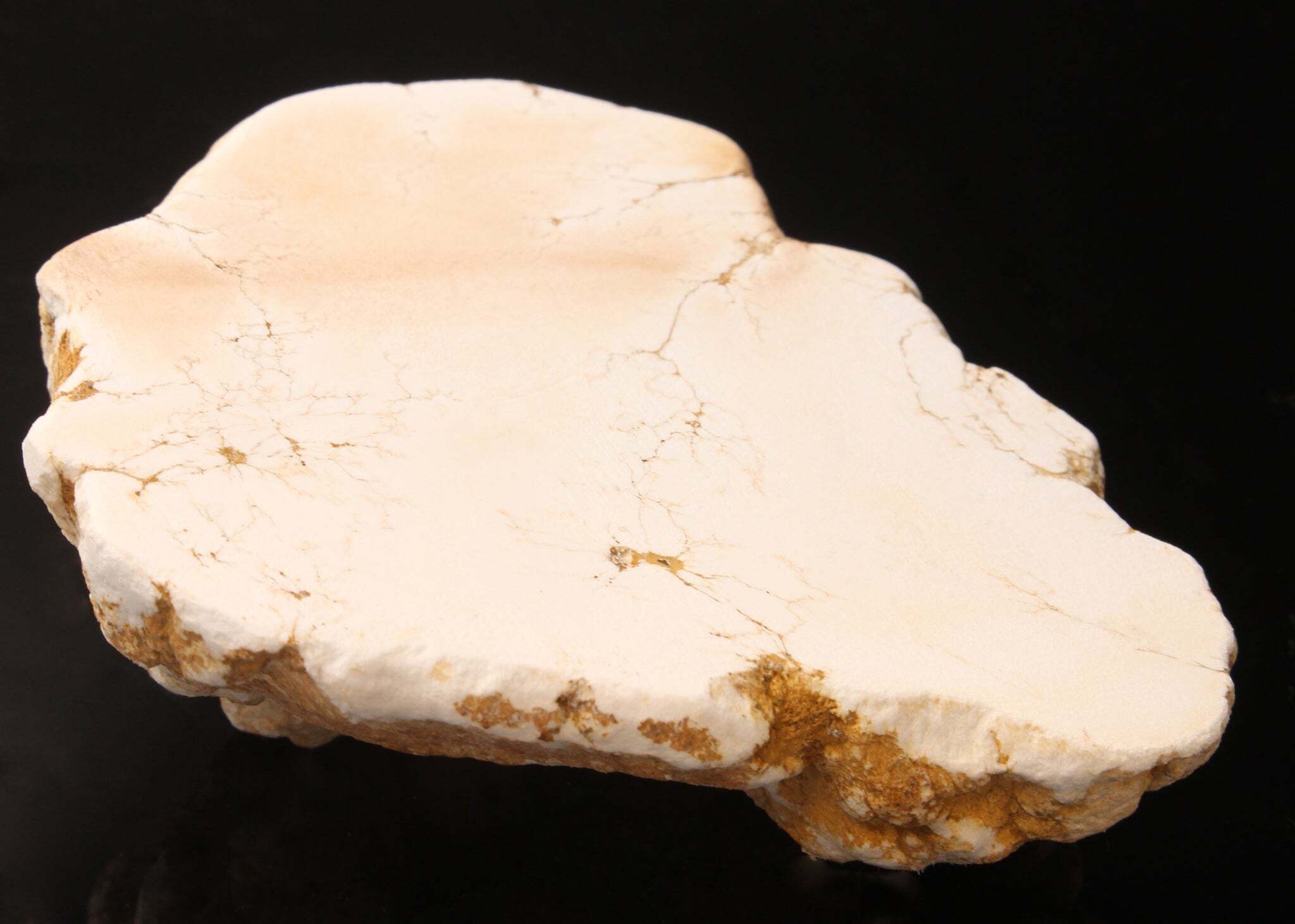
What is Aluminite? Aluminite is a hydrous aluminum sulfate mineral with the formula Al₂SO₄(OH)₄·7H₂O. Known for its softness and unique properties, this mineral forms in various geological settings, including clay and lignite deposits. Discovered in 1807 in Germany, it has since intrigued geologists and mineralogists alike. Aluminite typically appears as botryoidal to mammillary clay-like masses and is often found alongside minerals like gibbsite and gypsum. Its industrial applications, particularly in reducing the setting time of mortars, make it valuable in construction. Dive into these 25 fascinating facts about aluminite to uncover its composition, formation, and uses.
Key Takeaways:
- Aluminite, a mineral with a unique composition and formation, is found in specific geological environments. Its softness, optical properties, and historical significance make it a fascinating subject for geologists and mineralogists.
- Aluminite's association with other minerals, industrial applications, and regional distribution adds to its geological significance. Its crystallographic details and scientific studies provide valuable insights into its structure and properties.
What is Aluminite?
Aluminite is a mineral that has intrigued geologists and mineralogists for centuries. Its unique properties and formation processes make it a subject of great interest. Let's dive into some fascinating facts about this mineral.
-
Composition and Formula
Aluminite is a hydrous aluminium sulfate mineral with the formula Al₂SO₄(OH)₄·7H₂O. This means it contains aluminum, sulfate, hydroxide, and water molecules. -
Crystal System and Structure
It crystallizes in the monoclinic crystal system. The space group is P2₁/c, with unit cell parameters a = 7.44 Å, b = 15.583 Å, c = 11.7 Å, and β = 110.18°. -
Physical Properties
Aluminite is quite soft, with a Mohs hardness of 1–2. Its specific gravity ranges from 1.66 to 1.82, and it has a dull to earthy luster. -
Optical Properties
This mineral exhibits biaxial optical properties. Its refractive indices are nα = 1.459, nβ = 1.464, and nγ = 1.470, with a birefringence of δ = 0.011.
How Does Aluminite Form?
Understanding the formation of aluminite helps us appreciate its geological significance. It forms in specific environments and through particular processes.
-
Formation and Occurrence
Aluminite forms in clay and lignite deposits as an oxidation product of pyrite and marcasite along with aluminium silicates. -
Geological Environment
It can also be found in volcanic sublimates, native sulfur deposits, and rarely in caves. -
Formation Processes
The mineral forms through the oxidation of pyrite and marcasite in clay and lignite deposits. Water and oxygen interact with these minerals, leading to the formation of aluminium sulfate compounds.
Where Can You Find Aluminite?
Aluminite is not just found anywhere. Its occurrence is tied to specific geological settings and regions.
-
Geological Occurrences
It can be found in various geological settings, including clay and lignite deposits, volcanic sublimates, and native sulfur deposits. -
Regional Distribution
Aluminite has been reported from several locations around the world, including Newhaven Cliffs in East Sussex, England, and Ukraine.
What Are the Physical Characteristics of Aluminite?
The physical characteristics of aluminite make it unique and distinguishable from other minerals.
-
Crystal Habit and Morphology
Aluminite typically forms botryoidal to mammillary clay-like masses. It can also appear as needles and fibers, commonly in reniform, nodular, or spherulitic masses. -
Twinning
No twinning has been noted in aluminite. Its crystal structure is relatively simple and does not exhibit complex twinning patterns. -
Specific Gravity and Hardness
It has a specific gravity of 1.66–1.82 and a Mohs hardness of 1–2, reflecting its soft nature and relatively low density. -
Luster and Streak
Aluminite has a dull to earthy luster and a white streak. Its appearance can vary depending on its mass and texture, ranging from translucent to opaque.
What Are the Optical Properties of Aluminite?
Optical properties help in identifying and studying minerals. Aluminite has distinct optical characteristics.
- Optical Data
It exhibits biaxial optical properties with refractive indices nα = 1.459, nβ = 1.464, and nγ = 1.470. The birefringence is δ = 0.011, and the 2V angle is measured at 90° and calculated at 86°.
What Are the Industrial Uses of Aluminite?
Aluminite's properties make it useful in various industrial applications, particularly in construction.
-
Industrial Applications
Tile and masonry workers use aluminite to reduce the setting time of mortars. Its softness and ability to form clay-like masses make it useful in these applications. -
Recycling and Reuse
While aluminite itself is not commonly recycled, its use in construction and masonry can lead to the reuse of materials in various projects.
What Is the Historical Significance of Aluminite?
Aluminite has a rich history that dates back to its discovery in the early 19th century.
-
Discovery and Naming
Aluminite was first described in 1807 from Halle, Saxony-Anhalt, Germany. It was named for its aluminium content. -
Synonyms and Variations
It has several synonyms, including alley stone, halite, and websterite. These names reflect its historical and regional designations within the field of mineralogy.
What Are the Crystallographic Details of Aluminite?
Crystallographic data provide a detailed description of aluminite's structure and classification.
-
Crystallographic Data
The crystallographic data for aluminite include its monoclinic crystal system, space group P2₁/c, and unit cell parameters a = 7.44 Å, b = 15.583 Å, c = 11.7 Å, and β = 110.18°. -
Crystallographic Classification
Aluminite belongs to the sulfate mineral group and is classified under the Strunz classification as 7.DC.05. -
IMA Symbol and Classification
It is assigned the IMA symbol A, part of the IMA–CNMNC approved mineral symbols, useful for tables and diagrams in mineralogy.
What Are the Scientific Studies on Aluminite?
Scientific research has provided valuable insights into aluminite's properties and structure.
- Scientific Studies and Research
Aluminite has been the subject of several scientific studies, including its crystal structure analysis by Sabelli and Ferroni in 1978.
What Are the Associations of Aluminite with Other Minerals?
Aluminite often forms alongside other minerals, creating interesting associations.
-
Association with Other Minerals
It is commonly associated with basaluminite, gibbsite, epsomite, gypsum, celestine, dolomite, and goethite. -
Geological Environment
These minerals often form together in the same geological environments, such as clay and lignite deposits.
What Are the Synonyms and Regional Names of Aluminite?
Aluminite is known by various names, reflecting its historical and regional significance.
- Synonyms and Regional Names
It is known by several synonyms, including alley stone, halite, and websterite. These names reflect regional and historical designations within the field of mineralogy.
The Fascinating World of Aluminite
Aluminite, with its unique composition and properties, stands out in the mineral world. This hydrous aluminium sulfate mineral forms in various geological settings, from clay deposits to volcanic sublimates. Its soft nature, with a Mohs hardness of 1-2, and its dull to earthy luster make it easily identifiable. Discovered in 1807, aluminite has been used in construction to reduce mortar setting times. Its association with minerals like gypsum and gibbsite highlights its diverse formation environments. Despite its softness, aluminite's crystallographic data and optical properties have been subjects of scientific studies, deepening our understanding of this intriguing mineral. From its historical significance to its practical applications, aluminite continues to be a mineral of interest for geologists and mineralogists alike. Understanding these facts about aluminite not only sheds light on its composition and structure but also highlights its significance in geological and industrial contexts.
Frequently Asked Questions
Was this page helpful?
Our commitment to delivering trustworthy and engaging content is at the heart of what we do. Each fact on our site is contributed by real users like you, bringing a wealth of diverse insights and information. To ensure the highest standards of accuracy and reliability, our dedicated editors meticulously review each submission. This process guarantees that the facts we share are not only fascinating but also credible. Trust in our commitment to quality and authenticity as you explore and learn with us.


